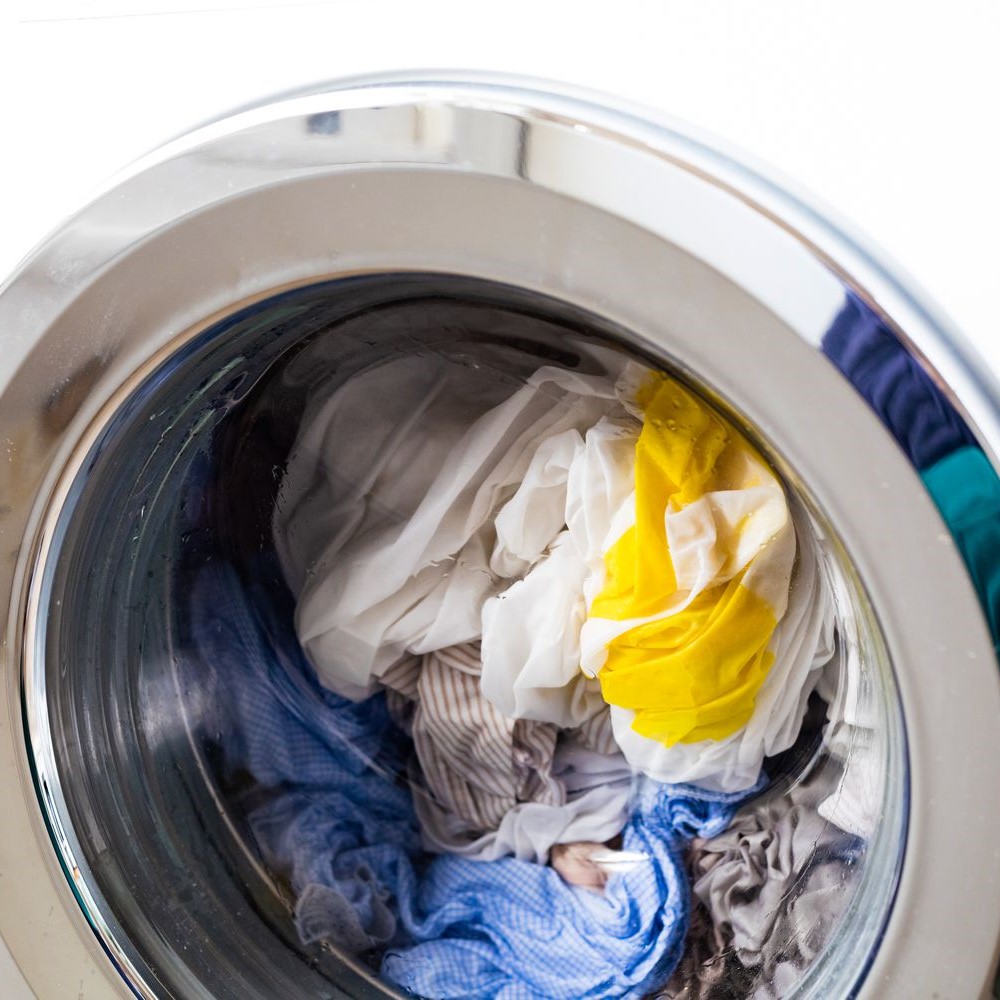Does Dryer Shrink Clothes? The Risks and Prevention Tips
When it comes to maintaining your favorite clothes, one common concern is whether using a dryer can cause them to shrink. Does dryer shrink clothes is a question many of us ponder, especially when dealing with delicate fabrics or expensive garments. In this comprehensive guide, we will explore the factors that contribute to clothing shrinkage in dryers, how to prevent it, and best practices for keeping your wardrobe intact. Whether you’re a seasoned laundry pro or someone looking to improve their laundry habits, understanding the dynamics of dryers and their impact on your clothes is essential.
 How Dryers Cause Clothes to Shrink
How Dryers Cause Clothes to Shrink
The Science Behind Fabric Shrinkage
Does dryer shrink clothes? Firstly, it’s important to understand why clothes shrink in dryers. Most fabrics, especially natural fibers like cotton, wool, and linen, are prone to shrinkage due to the heat and agitation involved in the drying process. When clothes are exposed to high temperatures, the fibers relax and tighten, causing the garment to reduce in size. Additionally, the tumbling action of the dryer can lead to further contraction of the fabric.
Heat as the Primary Culprit
Above all, heat plays a significant role in shrinking clothes. High temperatures can break down the molecular bonds in fibers, leading to irreversible shrinkage. For instance, cotton fibers lose their shape and structure when subjected to excessive heat, resulting in smaller garments. Similarly, wool can shrink and become misshapen if not dried properly. Therefore, managing the dryer’s temperature settings is crucial in preventing unwanted shrinkage.
Fabric Type and Construction
Moreover, the type of fabric and its construction also influence how much a garment will shrink. Natural fibers tend to shrink more than synthetic ones. Additionally, tightly woven fabrics offer less flexibility, making them more susceptible to shrinkage. On the other hand, loosely woven or knitted fabrics can withstand the drying process better, reducing the risk of shrinking.
 Factors Influencing Dryer Shrinkage
Factors Influencing Dryer Shrinkage
Dryer Settings and Temperature Control
If the dryer settings are not appropriately adjusted, clothes are more likely to shrink. High heat settings, such as “high” or “permanent press,” can cause significant shrinkage, especially for delicate fabrics. Conversely, lower heat settings or using the “air dry” option can minimize this risk. Therefore, selecting the right dryer setting based on the fabric type is essential in preventing clothes from shrinking.
Fabric Care Labels and Instructions
Additionally, paying attention to fabric care labels is vital. These labels provide specific instructions on how to wash and dry clothes, including recommended temperature settings. Ignoring these guidelines can lead to improper drying techniques, resulting in shrinkage. For instance, a garment labeled “tumble dry low” should not be dried on a high heat setting, as this can cause the fibers to contract and the clothing to shrink.
Pre-Washing and Drying Techniques
Furthermore, the way clothes are pre-washed and prepared for drying can impact shrinkage. Washing clothes in hot water before drying can exacerbate shrinkage. Therefore, it’s advisable to wash clothes in cold or lukewarm water to retain their original size and shape. Additionally, using gentle wash cycles and avoiding overloading the washing machine ensures that clothes are not excessively agitated, which can contribute to shrinkage during drying.
Preventing Clothes from Shrinking in the Dryer
Choosing the Right Dryer Settings
Firstly, selecting the appropriate dryer settings is crucial. Opt for lower heat settings, such as “low” or “delicate,” to minimize the risk of shrinkage. These settings provide a gentler drying process, allowing clothes to dry thoroughly without excessive heat exposure. Additionally, using the “air dry” or “no heat” option is an excellent way to prevent shrinkage altogether, particularly for delicate or sensitive fabrics.
Using Dryer Balls and Proper Load Management
Moreover, incorporating dryer balls into your drying routine can help reduce shrinkage. Dryer balls promote air circulation and prevent clothes from clumping together, ensuring an even drying process. This minimizes the need for prolonged drying times and reduces the likelihood of heat-induced shrinkage. Additionally, managing the dryer load size is essential. Overloading the dryer can lead to inadequate drying and increased wear on fabrics, both of which contribute to shrinkage.
Implementing Gentle Drying Techniques
Besides adjusting the dryer settings, implementing gentle drying techniques can effectively prevent clothes from shrinking. For example, removing clothes from the dryer while they are still slightly damp and allowing them to air dry completely can reduce the exposure to high heat. Alternatively, using a garment-specific drying rack provides an additional layer of protection against shrinkage, especially for items like sweaters and stretchy fabrics.
 Specialized Techniques for Delicate Fabrics
Specialized Techniques for Delicate Fabrics
Air Drying and Flat Drying Methods
In addition, delicate fabrics often require special care to avoid shrinkage. Air drying is one of the best methods for drying such garments, as it eliminates the need for heat altogether. For items that are prone to stretching or misshaping, flat drying is recommended. This involves laying the garment on a flat surface to dry naturally, preserving its original size and shape without the risk of shrinkage.
Using Mesh Laundry Bags
Another effective technique is using mesh laundry bags when drying delicate items in the dryer. These bags provide a protective barrier, reducing friction and agitation that can lead to shrinkage. They also help maintain the garment’s structure by preventing it from tumbling freely in the dryer, which is particularly beneficial for items like lingerie, hosiery, and lightweight fabrics.
Selecting Appropriate Fabric Softeners
Additionally, selecting the right fabric softeners can play a role in preventing shrinkage. Fabric softeners help relax fibers, making them less likely to contract under high heat. Using liquid fabric softeners during the wash cycle or dryer sheets in the drying process can provide an extra layer of protection against shrinkage, ensuring that clothes retain their original size and feel.
The Impact of Dryer Technology on Shrinkage
High-Efficiency Dryers and Their Benefits
Furthermore, advancements in dryer technology have significantly impacted the extent of clothing shrinkage. High-efficiency (HE) dryers, for instance, use lower temperatures and more efficient drying cycles, which help reduce the risk of shrinkage. These dryers are designed to be more gentle on fabrics while still providing effective drying results, making them an excellent choice for those concerned about clothes shrinking in the dryer.
Smart Dryers with Moisture Sensors
Similarly, smart dryers equipped with moisture sensors offer precise control over the drying process. These sensors detect the moisture level in the clothes and adjust the drying time accordingly, preventing over-drying and excessive heat exposure. As a result, smart dryers minimize the chances of shrinkage by ensuring that clothes are dried just enough to eliminate moisture without damaging the fabric.
Steam Drying Features
Additionally, some modern dryers come with steam drying features, which can help relax fibers and reduce wrinkles without subjecting clothes to high heat. Steam drying provides a gentler alternative to traditional heat drying, maintaining the integrity of the fabric and preventing shrinkage. This feature is particularly beneficial for delicate garments and those made from natural fibers that are more susceptible to shrinking.
 Best Practices for Maintaining Clothes Size and Shape
Best Practices for Maintaining Clothes Size and Shape
Sorting Clothes by Fabric Type
Firstly, sorting clothes by fabric type before drying is a fundamental practice in preventing shrinkage. Different fabrics have varying drying requirements, and grouping similar materials together ensures that each load is dried under optimal conditions. For example, drying heavy fabrics like jeans separately from lightweight fabrics like t-shirts can prevent uneven drying and reduce the risk of shrinkage.
Following Manufacturer’s Instructions
Moreover, adhering to the manufacturer’s instructions for both clothing and dryer use is essential. Clothing care labels provide valuable information on how to best dry each item, while the dryer’s user manual offers guidance on selecting the right settings. By following these instructions diligently, you can significantly reduce the chances of shrinking your clothes in the dryer.
Avoiding Over-Drying
Additionally, avoiding over-drying is a key factor in maintaining the size and shape of clothes. Over-drying not only increases the risk of shrinkage but also weakens the fabric fibers over time. To prevent this, opt for shorter drying cycles and check clothes periodically to ensure they are not exposed to excessive heat. Utilizing the dryer’s automatic shut-off feature, if available, can also help prevent over-drying.
Using Proper Laundry Detergents
Furthermore, using the appropriate laundry detergents can contribute to preventing shrinkage. Some detergents are specifically formulated to protect fibers and maintain the integrity of fabrics during the washing and drying processes. Choosing a gentle detergent suited to your clothing type can help preserve the size and shape of your garments, reducing the likelihood of shrinkage in the dryer.
Alternatives to Using a Dryer
Air Drying: The Gentle Alternative
Moreover, air drying remains one of the most effective ways to prevent clothes from shrinking. By allowing garments to dry naturally, you eliminate the exposure to heat and tumbling that can cause fibers to contract. Air drying is especially beneficial for delicate fabrics and oversized items that may not dry evenly in a dryer.
Using a Drying Rack or Clothesline
Similarly, using a drying rack or clothesline provides a convenient and efficient alternative to machine drying. These methods offer complete control over the drying process, enabling you to hang clothes in a way that maintains their shape and size. Additionally, air drying is energy-efficient and can prolong the lifespan of your clothes by reducing wear and tear caused by mechanical drying.
Towel Drying for Quick Drying
Furthermore, towel drying is another alternative that can help prevent shrinkage. By gently pressing clothes between towels, you can remove excess moisture without subjecting them to heat or agitation. This method is particularly useful for items that need to dry quickly but are susceptible to shrinking in a dryer.
The Role of Fabric Softeners and Conditioners
How Fabric Softeners Help Prevent Shrinkage
Firstly, fabric softeners play a pivotal role in preventing clothes from shrinking. They work by coating the fibers with a thin layer of conditioner, which reduces friction and prevents the fibers from contracting under heat. As a result, using fabric softeners can help maintain the original size and shape of your clothes, even when dried in a machine.
The Benefits of Vinegar as a Natural Fabric Softener
Alternatively, vinegar serves as a natural fabric softener that can aid in preventing shrinkage. Adding a small amount of vinegar to the rinse cycle helps relax the fibers and minimize the risk of shrinkage. Additionally, vinegar neutralizes residual detergent, ensuring that clothes remain soft and pliable without the use of harsh chemicals.
Choosing the Right Fabric Conditioner
Moreover, selecting the right fabric conditioner is essential in managing shrinkage. Some conditioners are specifically designed to protect fibers and maintain garment integrity during the drying process. Investing in high-quality fabric conditioners can provide long-term benefits, keeping your clothes in optimal condition and reducing the likelihood of shrinkage.
 Conclusion: Does Dryer Shrink Clothes
Conclusion: Does Dryer Shrink Clothes
In conclusion, the question of does dryer shrink clothes is multifaceted, involving various factors such as heat, fabric type, dryer settings, and care practices. However, by understanding these elements and implementing best practices, you can significantly reduce the risk of shrinkage and keep your clothes looking their best. Selecting the appropriate dryer settings, using fabric softeners, and opting for alternatives like air drying are effective strategies in maintaining the size and shape of your garments. Ultimately, being mindful of how you use your dryer and caring for your clothes with intention will ensure that your wardrobe remains intact and your favorite pieces continue to fit perfectly.

